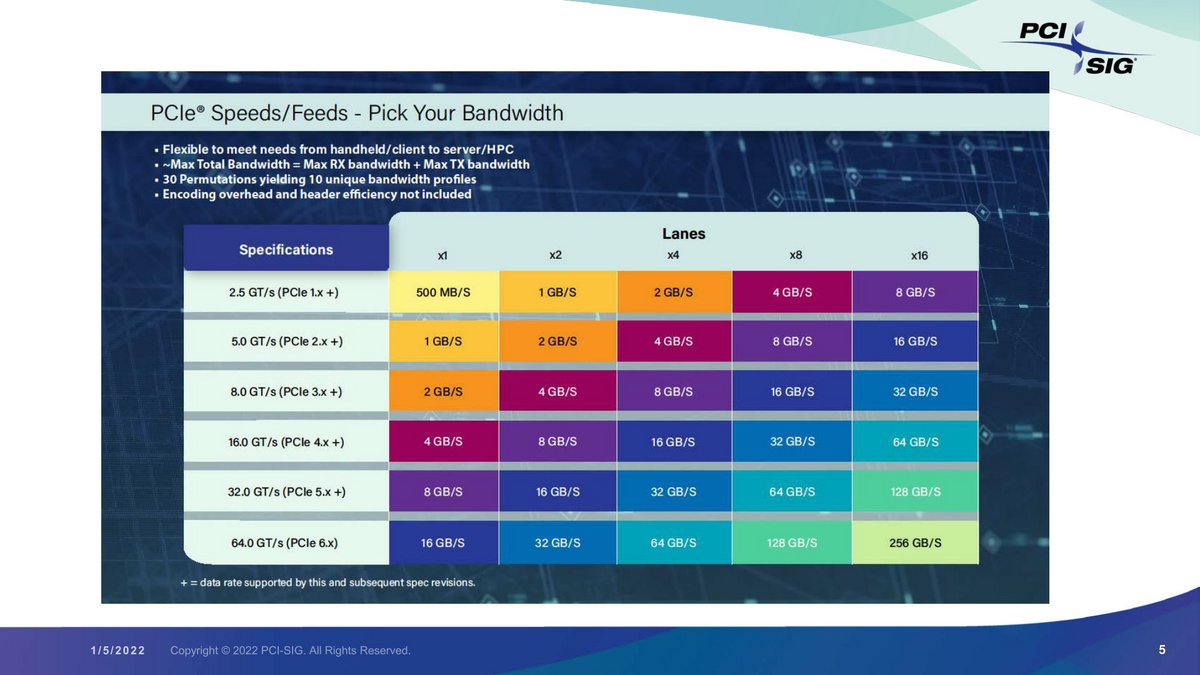We are promised ever higher speeds for graphics cards
and the SSD
PCI Express compatible…but not for a long time.
As we are just beginning to see PCI Express 5.0 materialize in our PCs, the PCI Special Interest Group (PCI-SIG) has just officially announced the specifications for the next version, PCI Express 6.0.
Doubling the bandwidth
Of the main characteristics put forward by the PCI-SIG, it is first a question of bandwidth. Since the launch of the 1.0 standard, it’s kind of been the main driver of PCI Express evolution, and 6.0 doesn’t disappoint with another doubling over 5.0.
In 2003, PCIe 1.0 offered a maximum of 8 GB/s on an x16 interface, and things then doubled, version after version, to 128 GB/s on PCIe 5.0, and now 256 GB/s on PCIe 6.0, still through an x16 interface.
Needless to say, PCIe 6.0 is also distinguished by perfect backward compatibility. This was the case on all previous versions, and there was no reason for PCIe 6.0 to be an exception, although…
Introduction of PAM4
Indeed, the doubling of the bandwidth is not the only major innovation of PCIe 6.0 which also involves the use of a new encoding, which makes our colleagues sayAnandTech that this new standard is the third major revision of the technology.

PCIe 4.0 and PCIe 5.0 appear as “simple” evolutions and still exploited signaling technology No-Return-to-Zero (NRZ). With PCIe 6.0, we move to a new system with the Pulse-Amplitude Modulation 4 (MAP4). Arguably the biggest change to the PCI Express standard.

Rather schematically, rather than two-state signaling (NZR) with the classic high/low (0/1), PAM4 doubles the number of possible states: the signal thus adopts a two-bit coding (00 /01/10/11). In a way that could not be more logical, PAM4 makes it possible to double the data transported without increasing the frequency.
As we were saying, PCIe 5.0 is just starting to reach our PCs when the specifications were decided in 2019. PCIe 6.0 should therefore not affect us for some time yet.
Source: AnandTech

11